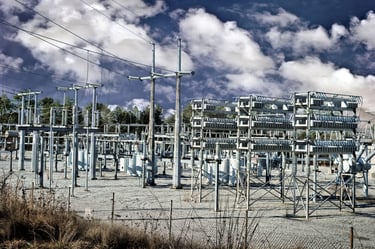Surge arresters can extend the life of system assets by limiting the voltage across expensive substation equipment during a switching surge event. Station class arresters must be carefully selected to provide the best protection.
The first step in selecting any type of arrester is to determine the required arrester maximum continuous operating voltage (MCOV) or continuous operating voltage (Uc). It is important to also consider grounding conditions to account for potential neutral shifts. Tables with typical system voltages and corresponding MCOV values can be found in arrester manufacturer catalogs.
The second step will require an arrester energy capability selection. Ultimately, the role of a surge arrester is to divert surges away from equipment. Depending on system activity a surge arrester is designed to handle multiple surges at various magnitudes and duration.
This is critical in station applications where switching surges generate significantly more heat compared to surges caused by lightning. Lab tests are performed on arrester designs to prove the arrester’s ability to divert surges numerous times and thermally recover under extreme conditions in the field. Typically, energy capability can be identified by an energy class letter or an energy rating in terms of kJ/kV MCOV.
The most important goal in selecting the right arrester is to maintain safety for nearby field personnel and critical equipment. In rare cases, a surge can exceed the arresters capability which will cause the arrester to sacrifice itself to protect the expensive equipment from damaging voltage levels. When this short circuit event takes place, a large amount of energy is shunted to ground by the arrester. This causes a buildup of heat and gas which must be safely dissipated.
Depending on the arrester design, the pressure will be released safely through the polymer housing or by the directional pressure relief vents. Each station arrester has a rated short circuit current value, or pressure relief rating which should be available in all manufacturer catalogs. Consider selecting a pressure relief rating higher than the available system fault current.






